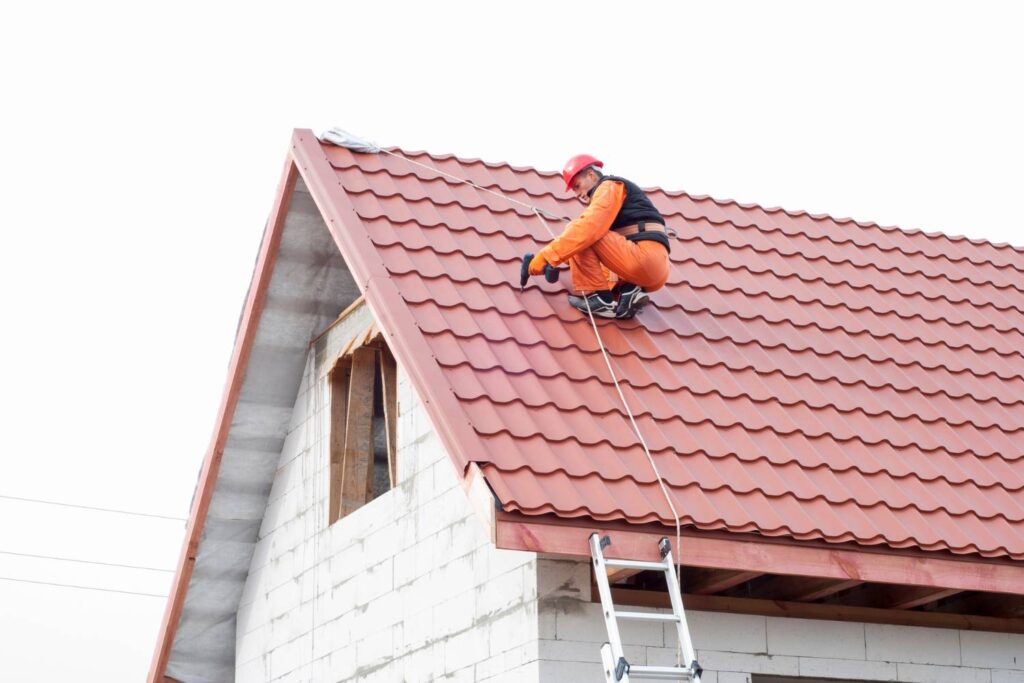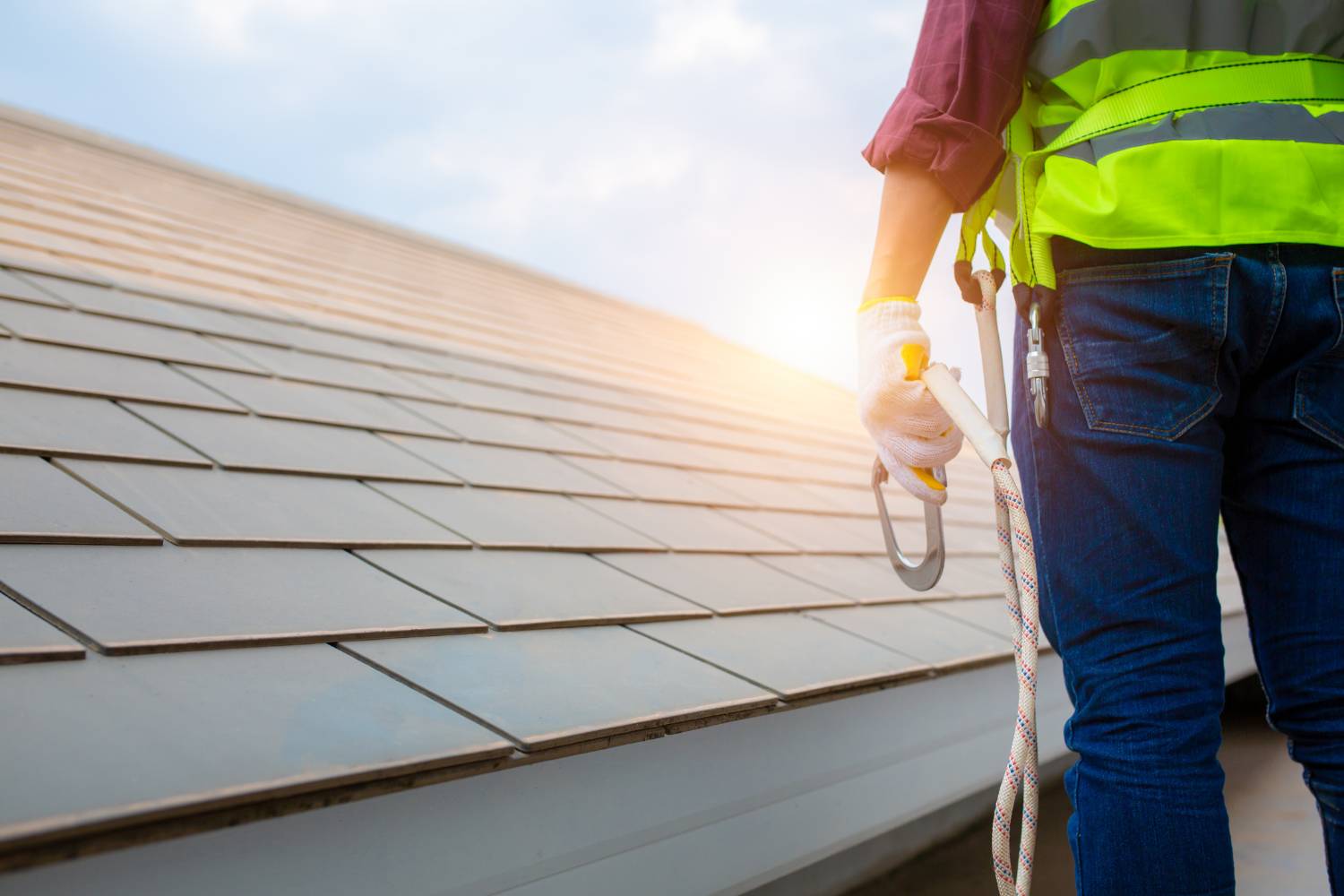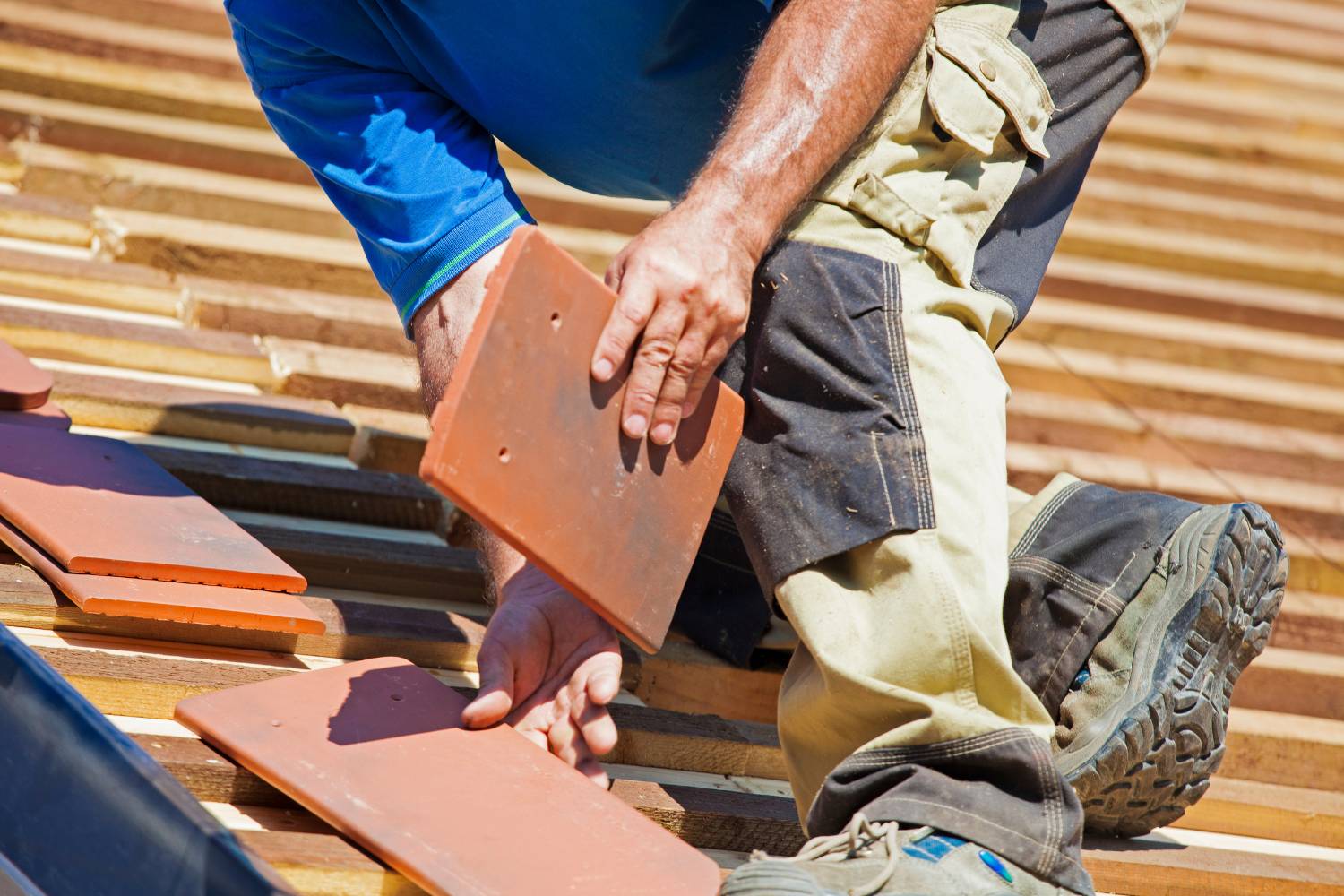Embarking on a roof restoration project can be daunting, but it's essential for the health and longevity of your home. In this blog, we delve into common mistakes that can occur during roof restoration and inspections, highlighting the pitfalls to avoid.
We'll explore how improper material choices and poor weather planning can undermine your efforts, and the severe consequences of neglecting timely repairs. By understanding these challenges and taking proactive measures, you can ensure a successful and long-lasting roof restoration that protects your home and enhances its value.
What Mistakes Can Happen During Roof Inspection And Assessment?
Roof inspections are essential for maintaining the integrity and longevity of a building. However, several common mistakes can occur during these inspections, leading to significant issues down the line. Below, we explore the most frequent errors made during roof inspections and assessments, along with the consequences and preventive measures.
Infrequent Or Irregular Inspections
- Overlooking Regular Inspections: Failing to conduct regular inspections, such as semi-annual checks, can lead to minor issues becoming major problems. Post-storm inspections are also crucial to identify damage early.
- Neglecting Professional Inspections: Inspections should be carried out by trained professionals. DIY inspections may miss critical issues that a professional roofer would catch.
Inadequate Documentation And Follow-Up
- Lack of Documentation: Proper documentation of inspection findings and repairs is essential. This helps in tracking the roof’s condition over time and ensuring all necessary repairs are completed.
- Ignoring Follow-Up: After identifying issues during an inspection, timely follow-up actions are necessary. Delaying repairs can worsen the damage and increase repair costs.
Common Overlooked Areas
- Penetrations and Flashings: Areas around roof penetrations, such as skylights, vents, and chimneys, are prone to leaks. Flashings need regular inspection to ensure they are not cracked or damaged.
- Expansion Joints: These joints are designed to handle building movements but often have a shorter lifespan than the roof itself. Regular checks are necessary to prevent failures.
- Gutters and Drainage: Clogged or improperly pitched gutters can lead to water pooling on the roof, which can cause leaks and structural damage.
Poor Inspection Techniques
- Incomplete Inspections: Some inspections might not cover all critical areas, such as the roof’s underside or hidden components like insulation and ventilation systems.
- Surface-Level Inspections: Only inspecting the roof’s surface can cause underlying issues. Techniques like infrared imaging can help detect moisture that isn't visible.
Structural And Material Concerns
- Incorrect Materials: Using the wrong materials for repairs or during initial construction, such as incompatible tiles for roof extensions, can cause problems. Ensuring materials match the roof’s specifications is vital.
- Improper Installation: Errors in installation, such as incorrect flashing or gutter pitch, can lead to immediate and long-term issues. Professional installation by experienced roofers is crucial.
Environmental And Operational Issues
- Vegetation and Debris: Allowing debris and vegetation to accumulate on the roof can cause damage. Regular cleaning is necessary to prevent moss, algae, and other growths that can degrade the roof.
- Exhaust Fans and Grease Traps: In buildings with kitchens, exhaust fans can release grease that damages the roof membrane. Installing and maintaining grease traps is essential to protect the roof.
How Can Incorrect Material Choices Affect Roof Restoration?
When it comes to roof restoration, selecting appropriate materials is crucial for ensuring durability and longevity. The wrong choice can lead to a plethora of issues, from structural damage to increased maintenance costs. Here’s a comprehensive look at how incorrect material choices can affect roof restoration.
Common Mistakes In Roof Repair
One of the most common mistakes in roof repair is disregarding small leaks and damage. These minor issues are often ignored because they seem too insignificant to warrant immediate action. However, this oversight can lead to major problems down the line, as water damage spreads throughout the walls and compromises the structural integrity of the building.
To avoid this, regular inspections should be conducted to spot these issues early. Addressing them promptly, regardless of their initial size, can save you from extensive repairs in the future.
Choosing unsuitable roofing materials is another common error. Selecting materials based purely on aesthetics or cost, without considering the specific needs of your home and climate, is a recipe for future issues.
When selecting materials for your roof, it is important to consider both aesthetics and suitability for your specific climate. Consulting with experienced roofing professionals can help you make a well-informed decision that meets your unique needs and requirements.
Ignoring regular roof maintenance is another critical mistake. In the midst of the hustle and bustle of daily life, routine checks and maintenance are often overlooked, unintentionally creating a breeding ground for undetected issues that gradually amplify in severity over time.
To ensure the longevity of your roof, it is highly recommended to establish a consistent schedule for regular maintenance. This should include professional inspections at least once a year, allowing for the early detection and timely resolution of any potential issues.
The Impact Of Using The Wrong Roofing Materials
Using the wrong roofing materials can significantly increase the vulnerability of your roof to leaks. Incorrect materials may not withstand local weather conditions, leading to water leaks that accumulate behind vulnerable points in the roof structure. This can result in structural issues, such as premature roof deterioration and roof rotting from moisture corruption. These problems can escalate the costs of repair and replacement significantly.
Inappropriate materials can also lead to higher repair costs. Low-quality or unsuitable materials can result in frequent repairs, increasing overall maintenance expenses. Additionally, poor-quality materials can lead to health risks. Moisture build-up from incorrect materials can foster mould growth, which poses significant health risks, particularly respiratory issues, to the occupants.
Common Roof Problems From Material Issues
Blisters are a common roofing problem that occurs when moisture gets trapped within the roofing system, causing pressure build-up and damage. Open laps, resulting from improper installation techniques, create vulnerabilities in the roof structure.
Splitting, often caused by differential movement between roof components, is another issue that arises from using incompatible materials. Punctures, usually due to carelessness or debris, lead to holes and tears in the roofing material.
Penetration failures, especially in pitch pans and sealants, can cause significant water ingress and structural damage. Wrinkles formed by differential movement create potential water ingress points. Flashing failures, due to improper installation or maintenance, can also lead to significant water damage.
Surface deterioration, exposure to elements, can wear down roofing surfaces, especially if the material is not durable. Fastener problems, such as movement and poor installation, can cause fasteners to back out, leading to leaks. Lastly, abuse and neglect, such as lack of proper maintenance and careless actions, can severely damage the roof.
How Can Poor Weather Planning Affect Roof Restoration?
Roof restoration is a complex process that requires meticulous planning and execution. One of the most critical factors influencing the success of roof restoration projects is weather planning. Poor weather planning can lead to various issues that compromise the quality, efficiency, and safety of the project. This blog explores the impact of inadequate weather planning on roof restoration and provides insights on how to mitigate these challenges.
Impact On Materials And Installation
- Material Performance: Different roofing materials react differently to various weather conditions. For instance, asphalt shingles need warmer temperatures for proper installation as the heat activates the adhesive. In contrast, metal roofing can be more suitable for colder climates but still poses installation challenges due to material contraction.
- Adhesive Effectiveness: Many roofing materials use adhesives that require specific temperature ranges to bond correctly. Extreme cold can prevent adhesives from curing properly, leading to weak bonds and potential leaks.
- Expansion and Contraction: Weather conditions cause roofing materials to expand and contract. Without proper planning, this can result in gaps, cracks, and eventual roof failure.
Scheduling Challenges
- Weather-Related Delays: Unexpected weather changes, such as rain, high winds, or snow, can delay roofing projects. These delays can disrupt the project timeline and increase labour costs.
- Seasonal Fluctuations: Roofing companies often face busy seasons during late spring to early fall due to favourable weather. Poor planning during these peak times can result in extended wait times and rushed jobs, leading to potential quality issues.
Safety Concerns
- Working Conditions: Unsafe working conditions due to wet, icy, or windy weather can pose significant hazards to roofing crews. Slippery surfaces and high winds can lead to accidents and injuries.
- Postponed Work: To ensure safety, roofing work may need to be postponed during adverse weather conditions, impacting the project timeline and budget.
Long-Term Impact On Roof Longevity
- Accelerated Aging: Constant exposure to harsh weather conditions accelerates the ageing of roofing materials. Sunlight can cause materials to become brittle and crack, while heavy rain and snow can lead to water damage and structural issues.
- Weather Damage: Severe weather events such as storms and hail can cause immediate and significant damage to roofs, necessitating urgent repairs or replacements.
Preventive Measures And Best Practices
- Advanced Planning and Flexibility
- Choosing the Right Materials
- Regular Maintenance and Inspections
- Working with Professionals
What Are The Consequences Of Poor Roof Restoration?
Roof restoration is a critical aspect of home maintenance that ensures the structural integrity and longevity of your property. Neglecting timely repairs or opting for subpar restoration can lead to severe consequences. Below, we explore the potential repercussions of poor roof restoration and emphasise the importance of regular maintenance and high-quality repair work.
Structural Damage
One of the most significant consequences of poor roof restoration is the risk of structural damage to your property. A damaged or deteriorating roof can compromise the entire building's structural integrity. Over time, water leaks can lead to rotting wood, weakened beams, and even the potential collapse of the roof.
Such structural damage can be extremely costly to repair and may threaten the safety of the building's occupants. Water that penetrates through the roof can seep into the underlying structure, including walls and foundations, causing cracks, swelling, and eventual failure. In extreme cases, neglecting roof repairs can result in a complete structural collapse, requiring extensive reconstruction efforts and posing serious safety hazards.
Water Leakage And Mould Growth
A poorly maintained roof becomes susceptible to water leakage during rainstorms or snow melting. Even a small leak can allow water to seep into the building's interior, damaging ceilings, walls, insulation, and electrical systems. Prolonged water exposure can lead to mould and mildew growth, posing health risks and requiring extensive remediation efforts.
Water leaks can cause unsightly stains on walls and ceilings, reducing the property's overall appeal. If left unattended, water leaks can lead to more significant issues, such as weakened structural elements, electrical malfunctions, and fire hazards. Mould growth resulting from roof leaks can spread throughout the building, affecting indoor air quality and causing health problems.
Decreased Property Value
Neglecting roof repair can significantly decrease the value of your property. A damaged or deteriorating roof reduces curb appeal and can give potential buyers a negative impression of the overall property condition. This can make it more challenging to sell your house and may necessitate reducing the asking price to attract buyers.
Structural damage from a neglected roof can spread to other parts of the property, further devaluing the entire structure. Additionally, a damaged roof often leads to poor insulation, making it harder to maintain a comfortable indoor temperature, deterring energy-conscious buyers. Delaying roof repairs can also result in more extensive and costly repairs down the line.
Voided Warranty And Insurance Coverage
Many roofing materials come with warranties that cover defects and damages for a specific period. However, neglecting roof repairs can void these warranties. Manufacturers often require regular maintenance and prompt repairs to uphold warranty terms.
By neglecting repairs, homeowners risk losing warranty benefits and becoming solely responsible for any repairs or replacements. Similarly, insurance coverage for roof-related damages may be affected if negligence is evident. Insurance companies expect homeowners to maintain their roofs and address repairs promptly. Failure to do so can result in denied claims or reduced coverage, leaving homeowners with significant financial burdens.
Conclusion
Ensuring a successful roof restoration requires awareness and avoidance of common pitfalls, diligent planning, and regular maintenance. Mistakes during roof inspections, improper material choices, and poor weather planning can all lead to significant issues and increased costs. By understanding these challenges, you can take proactive steps to maintain your roof’s integrity and extend its lifespan.
Regular inspections by professionals, appropriate material selection, and thorough weather planning are key to preventing costly repairs and ensuring the safety and value of your home. Stay vigilant and informed, and your roof will protect your home for years to come.
Frequently Asked Questions
One of the most common mistakes is neglecting regular inspections and maintenance. Homeowners often wait until there is visible damage before taking action, which can lead to more severe problems and higher repair costs. Regular inspections, especially after storms, can help identify and address issues early on.
Using the wrong materials can lead to various problems, such as leaks, structural damage, and increased maintenance costs. Each type of roofing material has specific properties and suitability for different climates and building structures. Consulting with a professional to select the right materials ensures durability and longevity of the restored roof.
Improper installation can cause immediate and long-term issues, such as leaks, poor insulation, and structural damage. Mistakes like incorrect flashing, inadequate ventilation, and improper gutter pitch can significantly impact the roof's performance. Hiring experienced and certified professionals for installation is crucial to avoid these problems.
Weather planning is critical because different materials and adhesives require specific weather conditions for proper installation. Poor weather planning can lead to delays, safety hazards, and subpar installation quality. Scheduling the restoration during favourable weather conditions ensures better results and reduces the risk of weather-related damage.
Inadequate documentation and follow-up can lead to missed repairs and a lack of historical data on the roof's condition. Proper documentation helps track issues over time, ensuring all necessary repairs are completed. Timely follow-up actions after inspections prevent minor problems from escalating into major ones, saving time and money in the long run.


